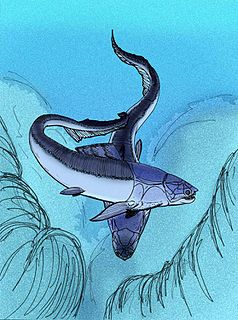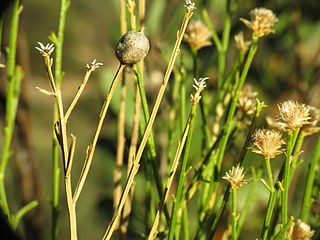
The Nemouridae are a family of stoneflies containing more than 700 described species, occurring primarily in the Holarctic region. Members of this family are commonly known as spring stoneflies or brown stoneflies. Fly fishermen often refer to these insects as tiny winter blacks.

The On Leong Chinese Merchants Association or simply Chinese Merchants Association, formerly known as the On Leong Tong, is a tong society operating out of its territory in Mott Street in New York's Chinatown. Established in November 1893, the tong fought a violent war for control of Chinatown's rackets and businesses with the Hip Sing Tong. In recent years the Tong has been linked to the Ghost Shadows street gang led by Wing Yeung Chan. Currently, there are over 30,000 registered On Leong members, the majority of them with a commercial or industrial background.

Paralycoptera wui is an extinct species of basal osteoglossoid from Early Cretaceous freshwater environments of what is now China. P. wui was originally described as a lycopterid osteoglossomorph close to Lycoptera, though, later, on the basis of several well preserved specimens, Xu and Chang (2009) reassessed it as a basal osteoglossoid on the basis of better-preserved fossil material. Xu and Chang also synonymized the second described species, P. changi, as well as Tanolepis and Yungkangichthys hsitanensis, alleging that all of them were too similar to P. wui to merit separate generic or specific status, and that any anatomical differences between these taxa were due to taphonomic distortions of the specimens. In the same study, Xu and Chang also synonymized the related Japanese osteoglossomorph genus, Aokiichthys, on the basis of the two genera having an almost identical number of vertebrae, though they did not specify whether they were simply merging the two genera together, or if all the species within Aokiichthys were to be demoted as synonyms of P. wui.
The wildland–urban interface (WUI) is a zone of transition between wildland and human development, the area where houses meet or intermingle with undeveloped wildland vegetation. Communities in the WUI are at a greater risk of catastrophic wildfire.
The Network Crack Program Hacker Group is a Chinese hacker group based out of Zigong in Sichuan Province. While the group first gained notoriety after hacking 40% of the hacker association websites in China, their attacks grew in sophistication and notoriety through 2006 and received international media attention in early 2007. iDefense linked the GinWui rootkit, developed by their leader Tan Dailin with attacks on the US Department of Defense in May and June 2006. iDefense linked the group with many of the 35 zero-day hacker proof-of-concept codes used in attacks with over a period of 90 days during the summer of 2006. They are also known for the remote-network-control programs they offer for download. Wicked Rose announced in a blog post that the group is paid for their work, but the group's sponsor is unknown.

Xiangshuiosteus wui is a brachythoracid arthrodire placoderm from the Late Emsian epoch of Wuding, Yunnan. It has recently been reassessed as a dunkleosteid.
Leptophlebia wui is a species of pronggill mayfly in the family Leptophlebiidae.
Amphinemura linda is a species of spring stonefly in the family Nemouridae. It is found in North America.

Amphinemura is a genus of spring stoneflies in the family Nemouridae. There are about 18 described species in Amphinemura.
Mallota bequaerti is a species of syrphid fly in the family Syrphidae.
Largus pallidus is a species of bordered plant bug in the family Largidae. It is found in North America.
Aradus shermani is a species of flat bug in the family Aradidae. It is found in North America.
Aneurus borealis is a species of flat bug in the family Aradidae. It is found in North America.
Gozmanyina majestus is a species of cosmochthoniid in the family Cosmochthoniidae.
Spilomyia crandalli is a species of syrphid fly in the family Syrphidae.
Phloeosinus pini is a species of crenulate bark beetle in the family Curculionidae. It is found in North America.

Aciurina thoracica is a species of fruit fly in the family Tephritidae.

Sweltsa is a genus of green stoneflies in the family Chloroperlidae. There are more than 50 described species in Sweltsa.

Metylophorus is a genus of common barklice in the family Psocidae. There are at least 50 described species in Metylophorus.
Amphinemura nigritta, the little black forestfly, is a species of spring stonefly in the family Nemouridae. It is found in North America.







